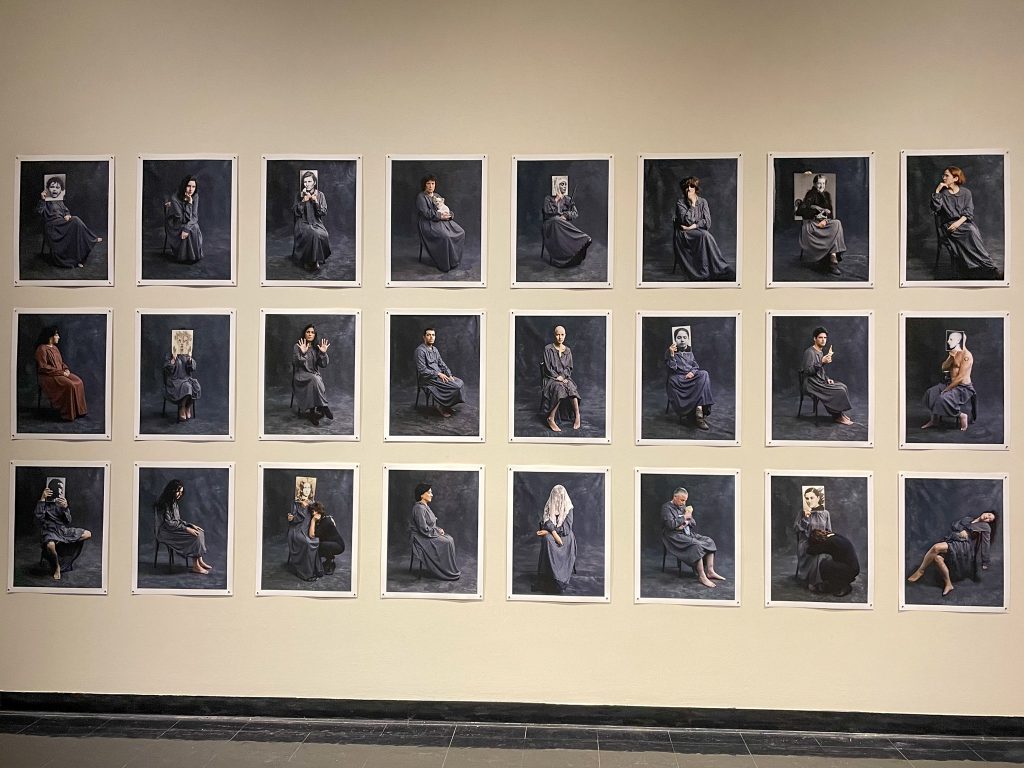The Binghamton University Arts Museum had introduced a new exhibition, Michal Heiman: Chronically Linked, with a reception last Thursday.
The exhibit houses photographs, videos and archival materials expressing the connections between asylums, psychoanalysis and oppression. Through a series of projects, Heiman explores the idea of mental health through political and personal angles.
In recent years, Heiman has geared her focus toward anonymous and marginalized women hospitalized in asylums. After doing research for another project in 2013, Heiman came across a photograph of a young woman at the Surrey County Lunatic Asylum in London, taken in 1855. A few years later, Heiman came across a similar photo of Maria Dominica D’Alberto at the San Servolo Asylum in Venice in 1880. After seeing herself represented in both photos, Heiman decided to recontextualize them through a mixture of research and her own artistic style.
Claire Kovacs, the curator of collections and exhibitions at BU, described her initial fascination with Michal’s work.
“I was interested with how it grapples with the history of mental health and the history of oppression and its intersections with women and femme folks,” Kovacs said.
Kovacs highlighted the exhibit’s importance to the University, particularly through its ability to foster a discussion on mental health and the stigma surrounding it. She also noted the connection between Michal’s art surrounding asylums and Binghamton’s history of asylums.
“There’s a small exhibition downstairs that looks at ‘Binghamton Castle,’” Kovacs said. “It was called the Binghamton Inebriate Asylum in its first iteration, and was the first place in the U.S. that treated alcoholism as a disease and not a social ill.”
Kovacs styled the exhibit in a way that leaves room for interpretation. The majority of the exhibit’s focus centers on personal perspective and what the individual can get out of the art.
The lower gallery portion of the exhibit hosts Michal’s bigger works, including her dress project — a series of photos formed in a grid style that depicts individuals of different backgrounds in a variety of poses, all while dressed the same. Michal’s video artwork is located in the upper gallery.
“As you go upstairs it’s a much more intimate experience where you’re looking at different video works by Michal both on monitors on a very small screen and then on a couple projectors in the backroom,” Kovacs said.
Kovacs described her process behind designing the exhibit, explaining the different methods of organizing the art.
“It’s a little bit of an art and a little bit of a science,” Kovacs said. “I knew that I wanted very strong works on these axes so you could see them as you’re walking in, and I wanted to focus this lower gallery on her dress project.”
Kovacs also credited her colleague John Tagg, a recently retired faculty member of the art history department and SUNY distinguished professor of art history, with helping her curate the exhibit. After viewing an exhibition of Michal’s work, Tagg approached Kovacs with the idea of bringing one to the University.
“I would say this exhibition is really just two projects,” Kovacs said. “In one of the ways it is pushing the expectations of contemporary photographic practice. It’s not an individual workpiece, it’s the whole conceptual framework altogether.”
Located in the main and mezzanine galleries of the Fine Arts Building, the exhibit will run from Sept. 8 through Dec. 10.



